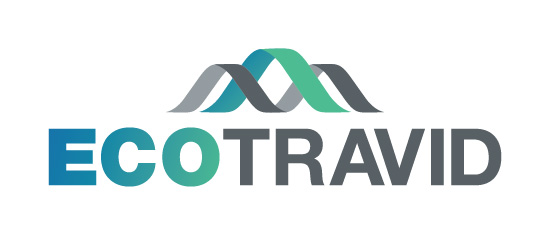From 2019-2023, our division »Mathematics for Vehicle Engineering« participated in the European LIFE-funded project ECOTRAVID (»Emission and Consumption Optimized Transport Missions Using Virtual Drives«). The project aimed to demonstrate the efficiency of a virtual driving simulator based on the »Virtual Measurement Campaign« (VMC) software developed at our institute, which reduces the fuel consumption of heavy-duty traffic and the associated CO2 emissions.
Consumption-Optimized Planning of Transport Missions With the Help of Virtual Driving Simulations
EU-Projekt: ECOTRAVID: Emission and Consumption Optimized Transport Missions Using Virtual Driving Simulation
In 2050, scientific projections indicate that the transport sector will account for around 40 percent of CO2 emissions. Freight transport is expected to be one of the main sources of CO2 emissions from land transport. More environmentally friendly modes of transport such as rail cannot fully replace trucks in many cases for geographic or infrastructure reasons, and limited battery life prevents electric/hybrid trucks from being a viable solution in the coming decades.
It is therefore important to find alternatives that make it possible to efficiently optimize and reduce the fuel consumption of trucks and the associated CO2 emissions. This is where the project comes in. In a virtual driving simulator – which is based on our VMC software – the partners demonstrate how the fuel consumption of trucks and the associated CO2 emissions can be reduced.
VMC Optimizes With Digital Twin
To achieve this goal, we methodically combine two innovative aspects with each other in our software tool VMC:
- On the one hand, we consider realistic vehicle models for trucks and trailers, the influence of the driver, and a number of possible vehicle modifications.
- In addition, our algorithms use real-world data that describes the environment of vehicles as accurately as possible – this includes both the road courses themselves, but also influencing factors such as topography, traffic or even climate.
Based on this, our VMC simulations calculate in detail the loss of energy for specific transport missions – including the analysis of different types of losses (air, roll and pitch resistance).
Application Tested in the Practice of the Partners
The VMC-based software was integrated into the fleet management platform of the French project coordinator Collecte Localisation Satellites. This system dynamically supports planning and decision-making in fleet management. In addition to the shortest and fastest route, it suggests other consumption-oriented alternatives. This makes it possible to see where fuel and thus emissions can be saved.
To demonstrate the efficiency of the innovative tool, a two-stage pilot test was carried out with 20 trucks and 20 trailers provided by the French project partner Groupe SAMAT SA under normal operating conditions and for various transport tasks. In the first phase, the simulations predicted a reduction in consumption to about 30 percent of trips, based on data from real SAMAT jobs. Taking into account the frequencies of the trips, the overall reduction in fuel consumption was approximately 3.5 percent.
In the second phase, we confirmed this by taking measurements on real transport routes. We were able to extend the method to other applications (e.g., supermarket deliveries) - also on the basis of simulations.
The methods (including route analysis and vehicle simulation) and techniques (web services) will continue to be developed after the end of the project, especially in the direction of applications in the field of e-mobility and alternative drives.
Our Project Partners
Project Duration and Funding
The project was funded from 15.06.2019 to 14.02.2023 under the LIFE program, the EU's financial instrument for environmental and climate protection measures created in 1992. EUR 3.4 billion was available for the funding period 2014-2020.

